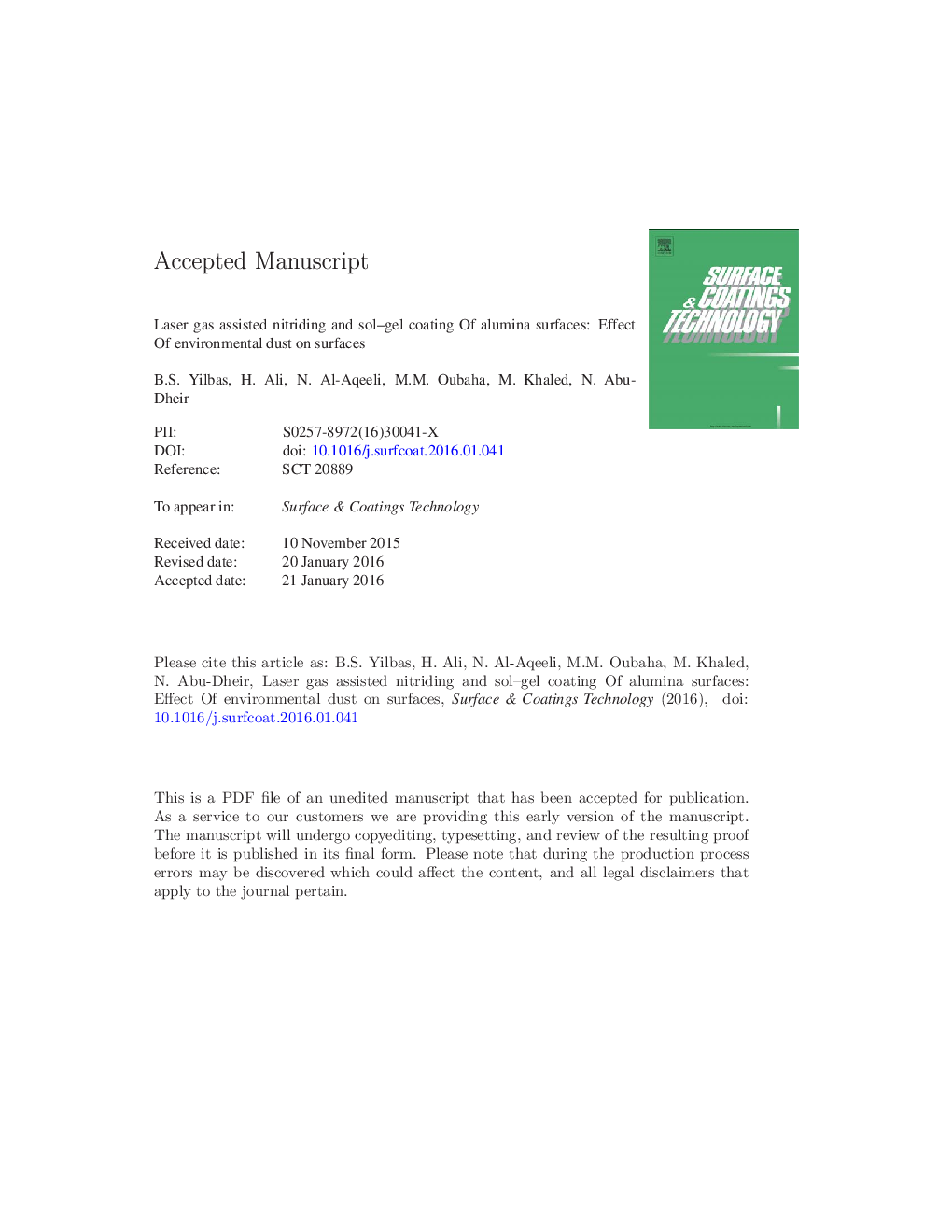| Article ID | Journal | Published Year | Pages | File Type |
|---|---|---|---|---|
| 8025698 | Surface and Coatings Technology | 2016 | 40 Pages |
Abstract
Laser treatment of alumina surfaces is carried out under high pressure nitrogen assisting gas ambient to generate a selective surface in relation to solar heating applications. Laser treated surfaces are sol-gel coated for protection from the dust settlements and the mud formation in the humid air environments. Morphological and metallurgical changes in the laser treated layer are examined using analytical tools incorporating scanning electron microscope (SEM), atomic force microscope (AFM), energy dispersive spectrometer (EDS), and X-ray diffraction (XRD). The optical characteristics of the sol-gel coating are assessed by incorporating ellipsometer. The residual stress formed in the laser treated layer is determined from X-ray (XRD) and Fourier transform infrared spectroscopy (FTIR) data. The influence of the mud, formed from the dust particles, on the surface characteristics of laser treated, and laser treated and sol-gel coated surfaces are examined and the adhesion work required to remove the dry mud from the surfaces are determined from the tangential force data obtained from micro-tribometer. The findings revealed that the laser treated and sol-gel coated alumina surfaces provide superior surface characteristics in the harsh environments because of weak adhesion between the mud formed from the dust particles and the coating surface. This is associated with the small texture height of the sol-gel coating, which lowers the area of the interfacial contact between the mud and the coated surface, and relatively lower surface energy of the sol-gel coating as compared to that of the laser treated surface. The sol-gel coating does not alter the optical characteristics of the laser treated surface.
Keywords
Related Topics
Physical Sciences and Engineering
Materials Science
Nanotechnology
Authors
B.S. Yilbas, H. Ali, N. Al-Aqeeli, M.M. Oubaha, M. Khaled, N. Abu-Dheir,
